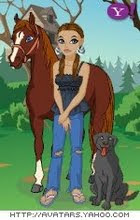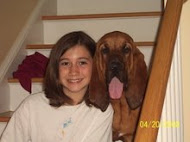Carbon Copies
Written by Rebecca Overton
As the first performance clones become adults, the equine industry will soon see if the genetic twins can truly live up to their originals. And while the cloning procedure has raised some eyebrows among industry veterans, owners are lining up for the chance to preserve their horses’ genetic influence.
The black foal nursing at the Paint mare’s side doesn’t look like a four-legged outlaw, the equine equivalent of Billy the Kid. He doesn’t look like he has the potential to transform into an explosion of horseflesh that can slam the most experienced rodeo cowboy into the dirt.
But his genes say he does.
Dubbed Airwolf Too until officially named, the foal is a clone of 435 Airwolf, the rank, raunchy, gray gelding who bucked his way into rodeo history when he tied the all-time leading saddle-bronc score in 1996. Owned by Franklin Rodeo Company of Alberta, Canada, and produced by commercial cloning and gene-banking company ViaGen, Airwolf Too is the cantankerous gelding’s genetic twin. And it already shows.“When they went to grab him to check him at the hospital about an hour after he was born, he was jumping and bucking and swooping around,” says Shane Franklin, owner of Franklin Rodeo Company. “He threw off one of the guys that grabbed him. If you tried to get hold of Airwolf today, he’d do the same thing.”
Foaled August 4 of this year at Timber Creek Veterinary Hospital in Canyon, Texas, Airwolf Too is seen as an opportunity to reverse a decision made more than 20 years ago. The original Airwolf was gelded, as was K2 Kingsway, who Franklin also plans to clone.
“Everyone knows hindsight is great,” he says. “When those horses go on to become champions, you think, ‘Why didn’t we leave them as studs?’ Now we’ve got the chance to get that back.”
Anecdotal evidence suggests Airwolf Too is on the bucking path of his 24-year-old original, but it’s still unknown how much his genes will contribute to his success. This year, the first American performance horse clones turned 2 and 3, and by the end of 2009, at least one will be tested against the success of the original.
Clone owners are pressing for breed associations to register clones, which none of them currently allow. Some in the industry fear the debate could snowball into litigation similar to that which the American Quarter Horse Association saw several years ago with the registration of embryo-transferred foals. The legal battle lasted two years, the association lost $550,000 in attorney’s fees, and the restriction against embryo-transferred foals was lifted.
Recently, the National Cutting Horse Association approved a policy allowing clones to show in aged events, the first time an equine performance organization set a specific policy on cloning. However, because clones are restricted from breed associations, they’re also restricted from breed-sanctioned shows.
As America’s cloned horses come into training and showing age, some owners want to find out where their investments stand. Although the procedure was controversial when it was first implemented, owners are now lining up to have their horses cloned.
Critics of the cloning industry, some of whom are breeders, are also waiting. Will clones be competitive against today’s horses? Will cloning, a $150,000 procedure, give the industry elite a breeding advantage? Will preserving the genes of yesterday’s horses prohibit the advancement of tomorrow’s legends?
Some genetic markers can be seen in action. For example, horses with certain bloodlines, such as four-time PRCA Bareback Horse of the Year Grated Coconut, seem to have bucking in their blood.
“His mother, Coconut Roll, is just as good as he is,” says Gregg Veneklasen, DVM, an equine-reproduction specialist who began transferring clone embryos for ViaGen in 2006. ViaGen, the commercial cloning and gene-banking company based in Austin, Texas, controls the patent for equine cloning.
“His ability to buck goes right down the line. It’s a family in which everything bucks.
“I truly believe DNA is far more powerful than we were ever told it is. I think it controls behavior and everything else.”
Four-time saddle-bronc champion Clint Johnson, who cloned Go Wild, the champion bucking horse given to him by the Calgary Stampede when the gelding retired, agrees.
But cloning has yet to determine how much of a horse’s success is genetic. Until now, none of the cloned horses have been old enough to test against their originals. That’s about to change.
Phil Rapp, the cutting industry’s all-time earnings leader, plans to show Whats On Tap, a replicate of multiple National Cutting Horse Association champion Tap Olena, in the 2009 NCHA Futurity. Under NCHA rules, a horse does not have to be registered with a breed association to be shown. Any 3-year-old can compete.
Rapp also owned Playboys Ruby Too, a clone of Playboys Ruby, the second all-time leading producer of cutting horses, until he sold both mares in 2006.
From the beginning, Rapp has said his goal is to see if the clones compete as well as the originals.
“Whats On Tap is very much like her original,” says Rapp, who raised and trained Tap Olena. “Playboys Ruby Too is much like Playboys Ruby’s colts.”
NCHA and other performance groups, such as the Professional Rodeo Cowboys Association, Women’s Professional Rodeo Association and National Barrel Horse Association, allow clones to show, but breed associations balk at registration.
Last year, lawyer Ernest Cannon, who owns two clones of Jae Bar Fletch, filed for registration applications with AQHA. The association tabled a proposal to amend Rule 227a, which doesn’t allow registration of clones, pending further study. The association is expected to act on the proposal at its March 2009 convention.
Several years ago, the association faced a similar situation with several breeders who wanted to register embryo-transfer foals. After a two-year battle and facing millions of dollars in damage claims, AQHA reached an out-of-court settlement that allowed the foals to be registered.
“I think they opened the door to allow that; they left themselves vulnerable,” says Susie Reed, manager of Polo Ranch in Marietta, Oklahoma. “But I don’t see any vulnerability in this. I think they could refuse to do this. I don’t think there’s a need for [registering clones]. What do you register them as? Do you register them as the same horse?”
With other clones, such as Airwolf Too, paperwork is less important to the horse’s career. In fact, it’s likely Airwolf Too will go straight to stud.
“I will probably never buck these horses because the chance of them getting hurt is too high,” Franklin says. “Airwolf and Kingsway don’t need to prove themselves. That’s why we cloned them. I need them to breed to mares to get better offspring for professional rodeo as a whole.”
With two childhood friends—professional bull rider Kelly Armstrong and retired bullfighter Jason Davidson—Franklin set up a cloning partnership, Best Buckin Clones Inc., with the intention of standing cloned stallions to select mares.
“I don’t mind what Phil and Mary Ann Rapp are doing,” says Brenda Pieper of Pieper Ranch, also located in Marietta. Pieper Ranch stands several stallions including Playgun, 1996’s top money-earning 4-year-old cutting horse.
While Pieper does not support the use of clones as breeding animals, she understands why horse owners wonder how clones will perform in competition.
“The Rapps are riding theirs, they’re trying them,” she says. “They’re testing them soundness-wise, they’re testing them ability-wise. And if they’re good enough, they’re going to test them in the show pen.
“I wouldn’t do it, but the way Phil and Mary Ann are doing it would be something I could live with. But I would be very much opposed to doing it just for the sake of putting that animal into the breeding herd.”
Pieper says breeders should be striving to improve and expand the gene pool. Cloning, she says, is a step backwards.
“My idea of moving forward in the breeding business would be to try to raise the best daughter of Playgun we possibly can, and breed her to whatever we feel is the best new, young sire to come along,” Pieper says. “And, hopefully, do even better than the previous generation.”
Veneklasen contends that Franklin’s partnership could be a way to improve the breeding process and reduce costs. He also sees cloning as a means to preserve endangered species and take the guesswork out of breeding.
“I think the time will come when people will stand bucking-horse stallions,” he says. “It’s too costly to breed 200 mares and hope three of the offspring will buck. Why not breed the ones you already know will buck? Even though cloning is expensive, when you put pencil to paper it’s actually cheaper.”
Some are less convinced.“We’re not even real big on embryo transfers,” says Reed, who stands stallions Gallo del Cielo (aka “Rooster”), Boonlight Dancer and Soula Jule Star at Polo Ranch. “We do a lot of them for customers and we do some ourselves, but all of us here believe we’re supposed to be producing better with each generation, and we believe when a horse is gone, he’s gone. We’ve got some semen frozen from Rooster, and I don’t even know if I’d use it if he died.”
Because of the price of cloning and “negative opinion about it,” Reed doesn’t see cloning changing the breeding industry, even if clones are allowed to register.
“I don’t think there will be enough of them to make an impact either way,” she says. “$150,000 is a lot of money.”
He’s black with a white star, but in a few years he’s expected to gray out like the original. Also like the original, Airwolf Too is expected to be a pistol.
“If he wants to nurse and the mare is lying down, he goes and bites her in the ear to get her up,” Franklin says. “When he gets about a year old, his true colors, his personality will come out. If he’s even half as wild and raunchy as the original, he’ll be good enough.”
After he was born, Franklin received more than 100 phone calls from people throughout the United States and Canada, interested to know more about the clone. “Guys at the grocery store and tire shop ask me how the little guy’s doing,” he says. “When I walk down Main Street, people with suits and ties, who you’d think would have absolutely no interest in horses, ask me about the colt.”
Airwolf Too will stay at Timber Creek Veterinary Hospital with his surrogate mare until spring, when he’ll move to Bonnyville, Alberta, Franklin says.
Until then, he’s just another foal—but with a 24-year-old twin.
--------------------------------------------------------------------------------
Rebecca Overton is a senior editor for Quarter Horse News. Send comments on this story to edit@westernhorseman.com
~~~~~~~~~~~~~~~~~~~~~~~~~~~~~~~~~~~~~~~~~~~~~~~~
It's my 100th POST!!!! YAY!!!! Well comment and tell me how I should celebrate......










3 comments:
Celebrate by singing a song and recording it on the computer, then posting of the blog somehow! Lets see....you could sing your fave TobyMac song, or an old song like Singin' in the Rain. I don't know, you can choose. :D
AO
Singin' in the rain... with all the movements! And post it on youtube!
I've always thought cloning was interesting.
Lydia
Abster~
probably not*lol*! I'm not THAT outgoing;)!
Lydia~
Wouldn't be allowed..... Lets keep brainstorming...........
~Southern Commander~
Post a Comment